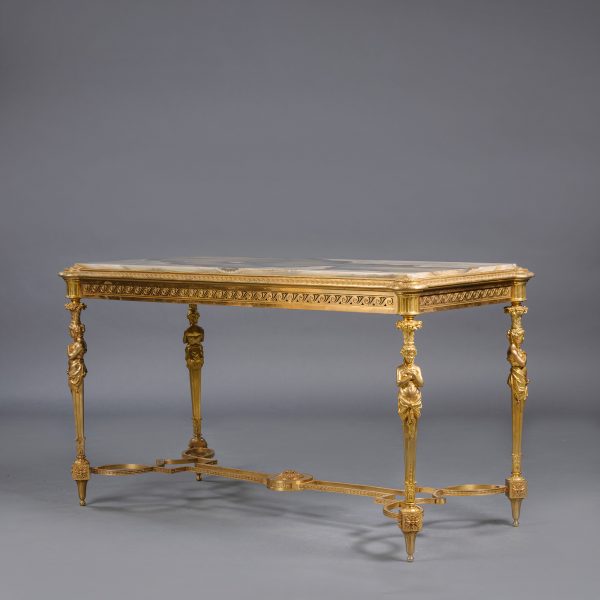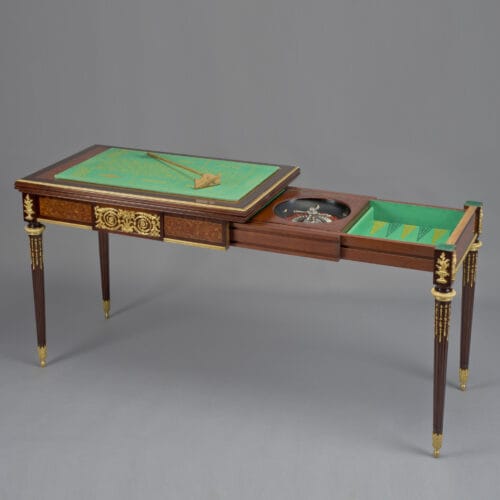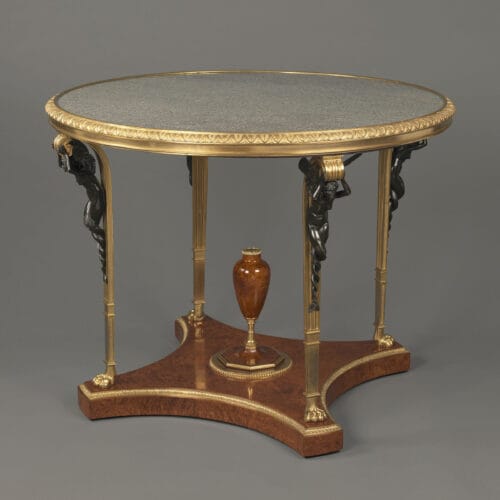François Linke
A Rare and Important Gilt-Bronze Mounted Mahogany Centre Table with ‘Pietre Dure’ Specimen Marble Top
POA
A Rare and Important Gilt-Bronze Mounted Mahogany Centre Table with 'Pietre Dure' Specimen Marble Top, By François Linke, Paris, Index Number 616. This...
Dimensions
Height: 76 cm (30 in)Diameter: 106 cm (42 in)
Description
A Rare and Important Gilt-Bronze Mounted Mahogany Centre Table with ‘Pietre Dure’ Specimen Marble Top, By François Linke, Paris, Index Number 616.
This magnificent centre table has a ‘Pietre Dure’ hardstone mosaic top incorporating various precious marbles. The frieze is mounted to each side with a rectangular gilt-bronze plaque cast in relief with putti representing sculpture. The tapering legs are headed by swagged acanthus garlands running to leaf-cast and pomegranate-form feet.
The surround of the gilt-bronze top with engraved signature ‘F. Linke’.
The remarkable marble top is comprised of radiating roundels and spears of precious marble including levanto rouge, violet brocatelle, viollette de Villette, vert d’Irlande, vert antique, which are all inset within a bleu Belge marble ground. It is an excellent example of the art of ‘Pietre Dure’ (or hard stones) which has been prized throughout the history of the decorative arts and admired for its beauty and technical prowess akin to ‘painting in stone’.
The origins of the technique can be traced to the classical world when precious stones were sourced from across the Roman Empire, from Algeria to the Alps, and was revived towards the end of the 16th century following excavations of archaeological sites. Marbles and hardstones were prized for their connection to Ancient Rome, and fragments of especially precious stones, such as porphyry excavated from the Roman Forum, were reworked into ‘Pietre Dure’ objects and incorporated into mosaic tabletops. The fashion for ‘Pietre Dure’ led to the establishment of workshops in Rome, soon followed by Florence.
The geometric inlay to the present table is inspired by early renaissance ‘intarsias’ created by the Cosmati family, who created works by taking marble from ancient Roman ruins, and arranging the fragments in geometrical decorations.
The magnificent marble tabletop was designed to complement the table base which is richly adorned with neoclassical attributes, such as the swagged acanthus leaves which are associated with enduring life. The frieze of the table to four sides is applied with finely cast gilt-bronze plaques cast in relief with cherubs which are depicted in the divine pursuits of painting and sculpting. The Greco-Roman references are reinforced by the design of the table base which is conceived in the neoclassical style based on the ‘Table des Muses’ by Jean-Henri Riesener, which was made for Louis XVI by Jean-Henri Riesener and now on display at the Petit Trianon, Versailles.
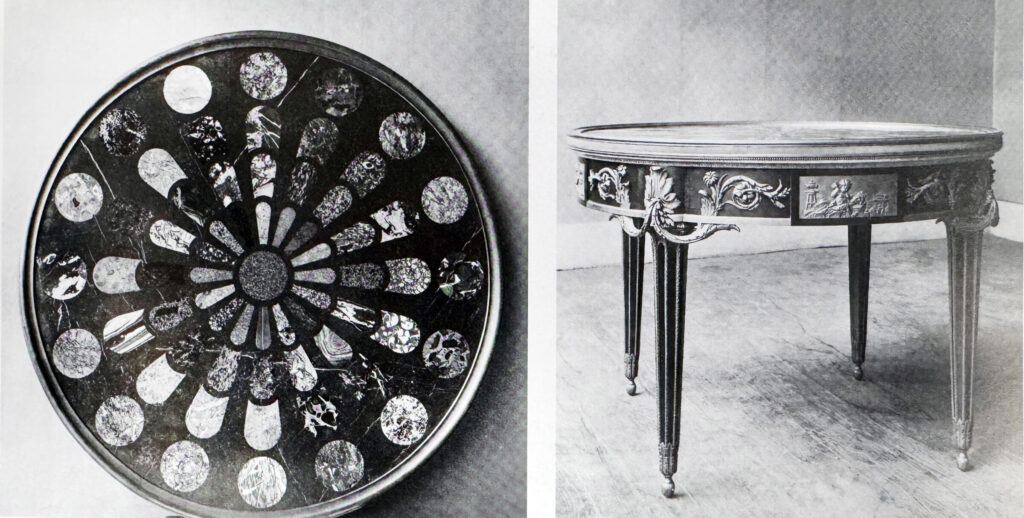
A photograph of a table of this model in the Linke Archive, illustrated in C. Payne, ‘François Linke: The Belle Epoque of French Furniture’, Woodbridge, 2003, p. 495, pl. 616
The maker of the table is François Linke who is the most famous and highly prized Parisien ébéniste of the Belle Epoque. Linke is renowned for the exceptional quality of his craftsmanship, use of rich materials and the fine proportions of his creations. Linke’s title for this table ‘Grand guéridon Louis XVI, pietment de la table Muse, dessus marbre assemblés, bronzes dorés mats’ also refers to its design being based on the celebrated ‘Table des Muses’ by Riesener. The Linke Archives record this table by its Index Number 616 and it is a rare model with only two examples known to have been made.
France, Circa 1900.
Date
Circa 1900
Origin
France
Signature
The surround of the gilt-bronze top with engraved signature 'F. Linke'.
François Linke (1855 – 1946) was the most important Parisian cabinet maker of the late nineteenth and early twentieth centuries, and possibly the most sought after cabinet maker of his period.
He was born in 1855 in the small village of Pankraz, in what is now the Czech Republic. Records show that Linke served an apprenticeship with the master cabinetmaker Neumann, then in 1875 at the age of 20 he arrived in Paris where he lived until he died in 1946.
It is known that the fledgling Linke workshops were active in Paris in the Faubourg St. Antoine as early as 1881, and during this time he supplied furniture for other more established makers such as Jansen and Krieger.
The quality of Linke’s craftsmanship was unsurpassed by any of his contemporaries and reached its peak with his spectacular stand at the Paris Exposition Universelle in 1900, where his Grand Bureau took the gold medal. He gambled his fortune and reputation on this stand, exhibiting several breathtaking items of furniture with sculptural mounts of the most exceptional quality and proportion. His gamble worked and his reputation was established to such an extent that Linke continued to be the pre-eminent furniture house in Paris until the Second World War.
As the Art Journal reported in 1900 on Linke’s stand:
‘The work of M. Linke … was an example of what can be done by seeking inspiration amongst the classic examples of Louis XV and XVI without in any great sense copying these great works. M. Linke’s work was original in the true sense of the word, and as such commended itself to the intelligent seeker after the really artistic things of the Exhibition. Wonderful talent was employed in producing the magnificent pieces of furniture displayed….’
The formation of Linke’s distinctive style was made possible by his collaboration with the sculptor Léon Messagé. Together Linke and Messagé designed furniture for Linke’s 1900 exhibition stand, with exuberant allegorical figures cast in high relief, that exemplified Linke’s ability to seamlessly merge the different mediums of wood carving, bronze and marquetry into a dynamic unified whole.
Today Linke is best known for the exceptionally high quality of his work, as well as his individualism and inventiveness. All of his work has the finest, most lavish mounts, very often applied to comparatively simple carcasses. The technical brilliance of his work and the artistic change that it represented were never to be repeated.
Bibliography:
Payne, Christopher. François Linke, (1855 – 1946), The Belle Époque of French Furniture, Antique Collectors’ Club, (Woodbridge, UK), 2003.
Meyer, Jonathan. Great Exhibitions – London, New York, Paris, Philadelphia, 1851-1900, Antique Collectors’ Club, (Woodbridge, UK), 2006; pp. 298 – 300.
Ledoux – Lebard, Denise. Les Ébénistes du XIXe siècle, Les Editions de l’Amateur, (Paris), 1984; pp. 439-43.
Revue Artistique & Industrielle, (Paris), July-August 1900.
Coral Thomsen, D. (ed), The Paris Exhibition 1900, The Art Journal, 1901; p.341.
C. Payne, ‘François Linke: The Belle Epoque of French Furniture’, Woodbridge, 2003, p. 495, pl. 616 (a table of this model illustrated).
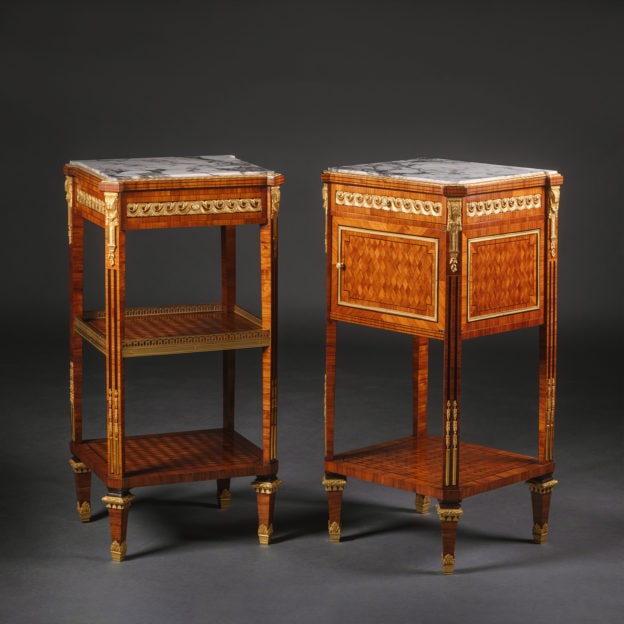




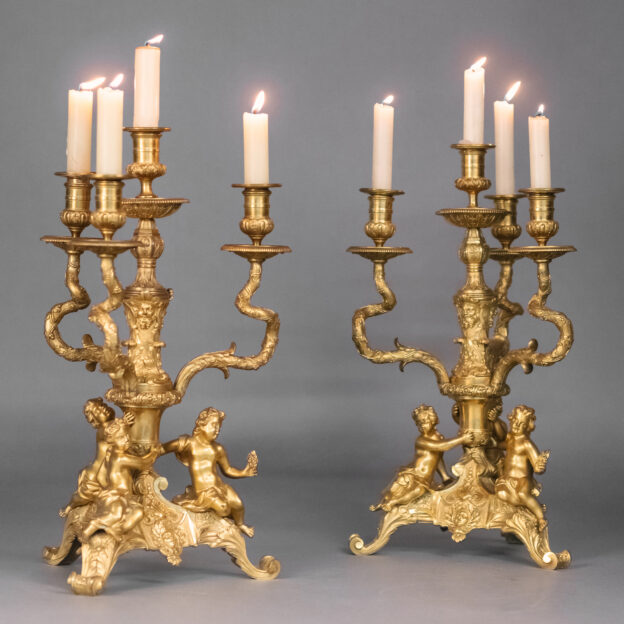
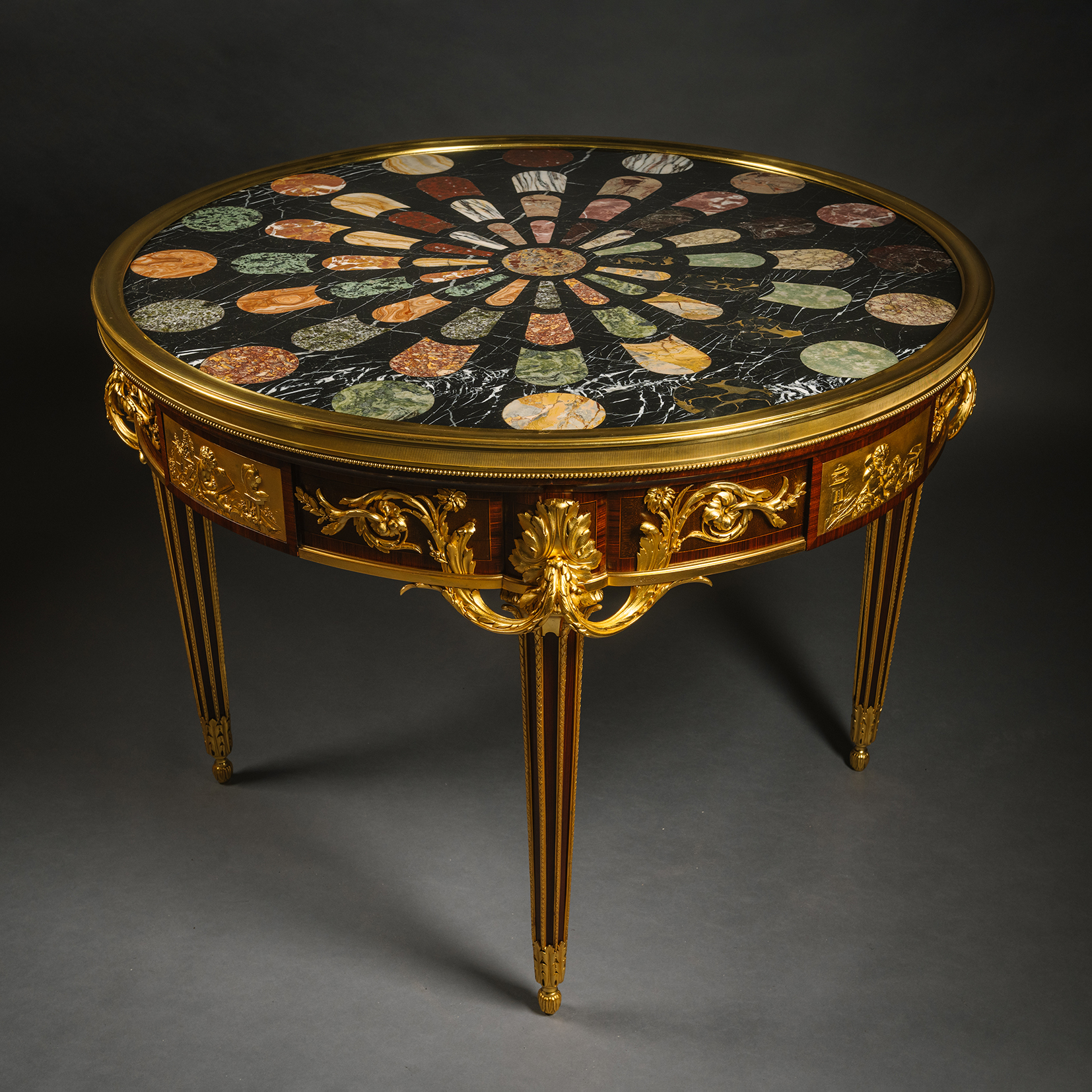
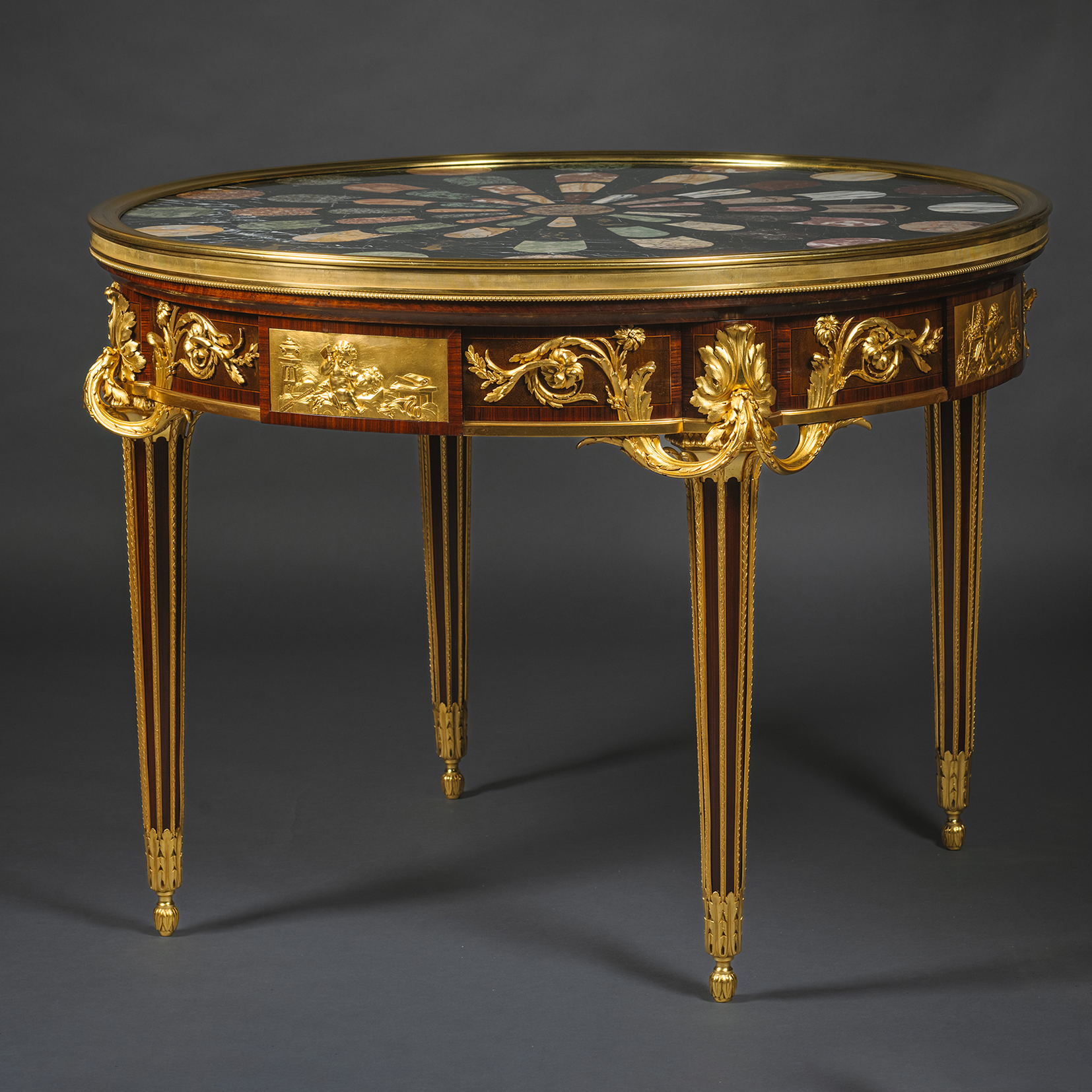
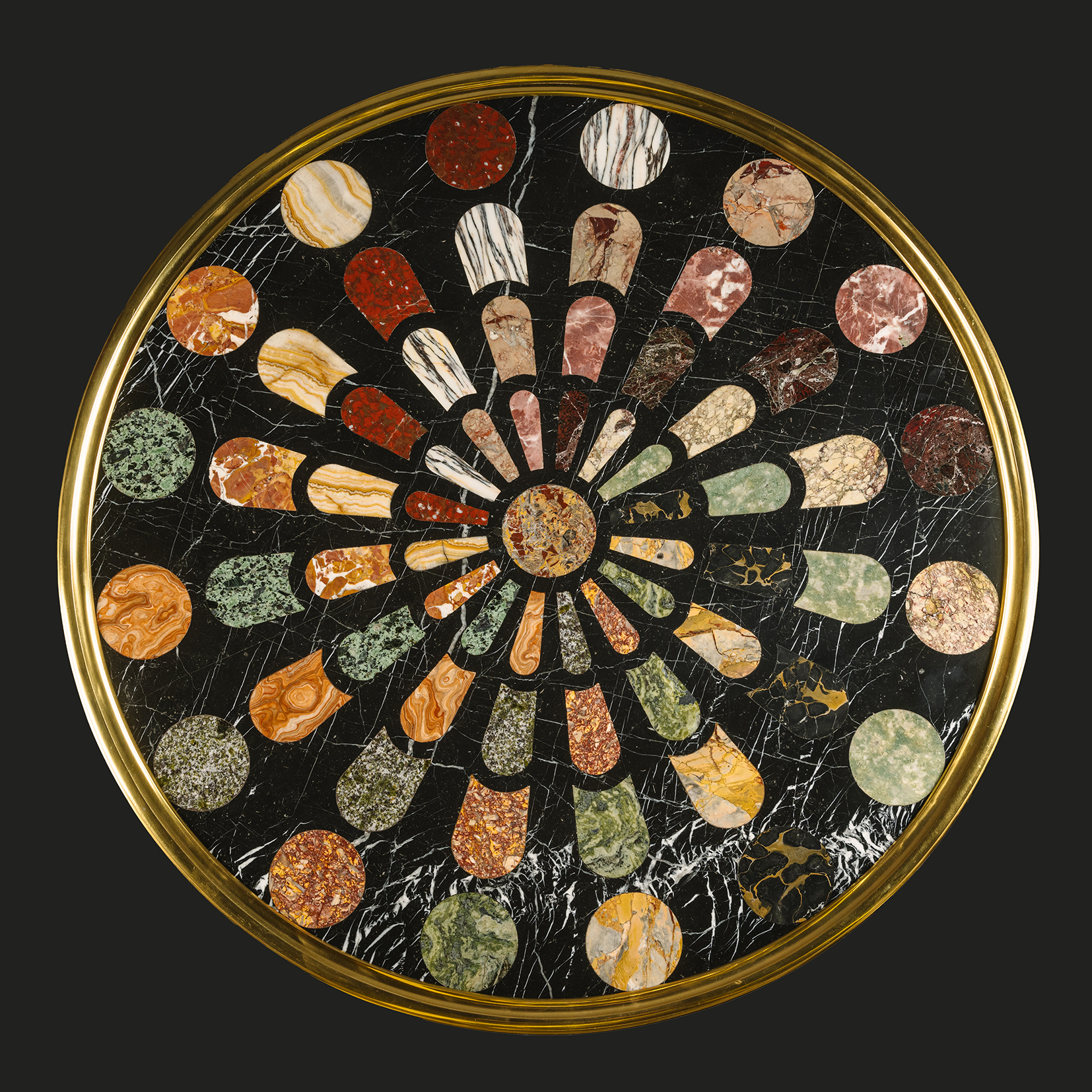
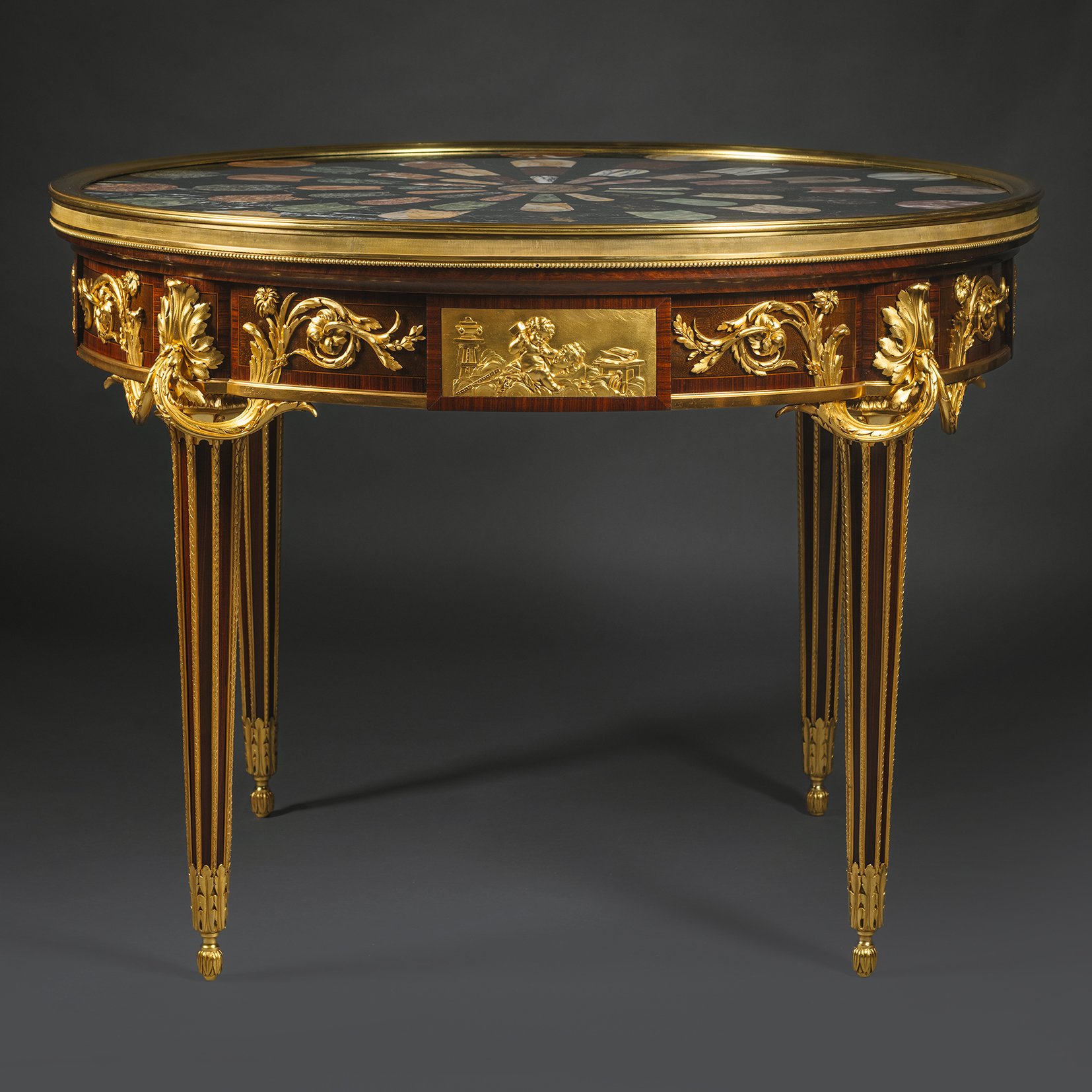
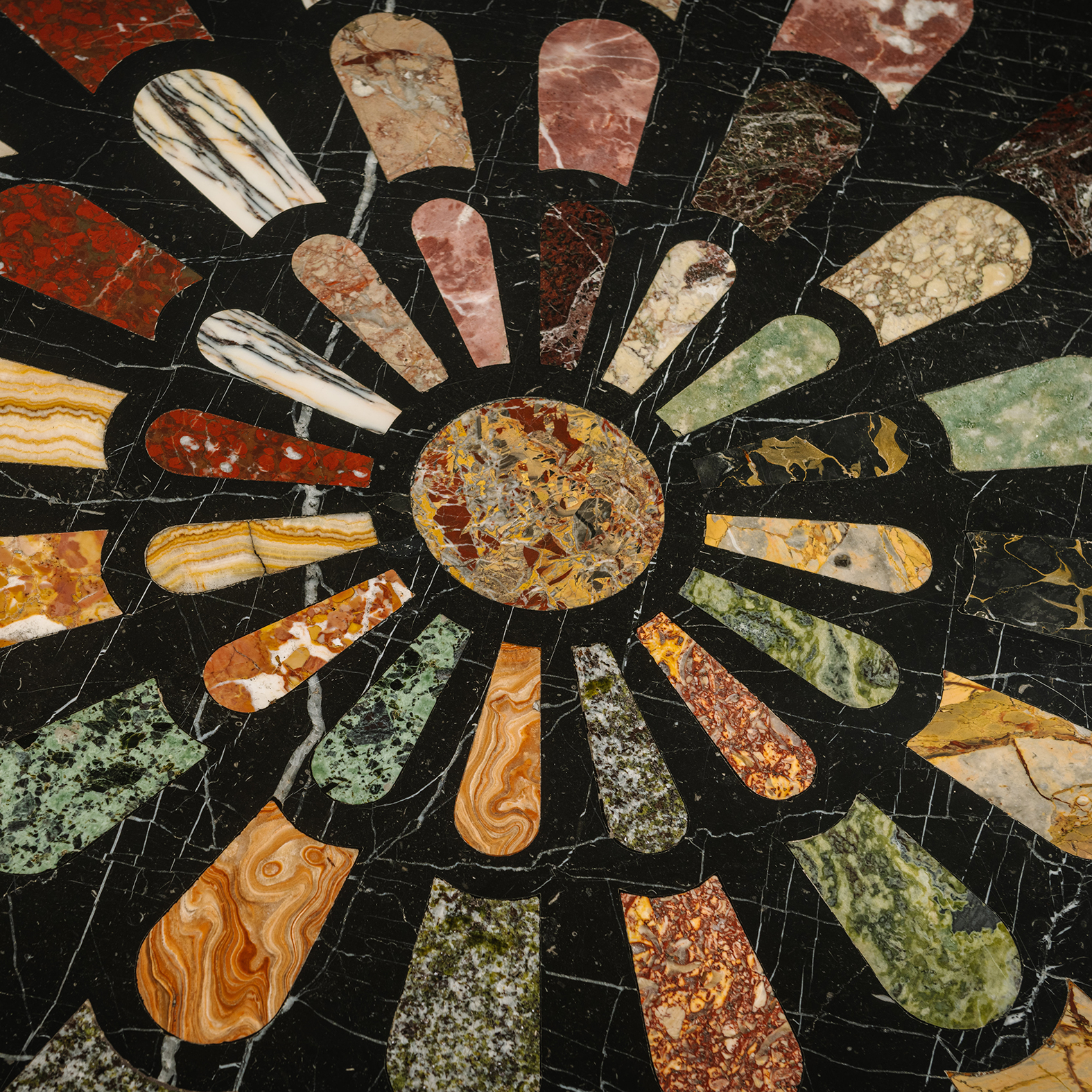
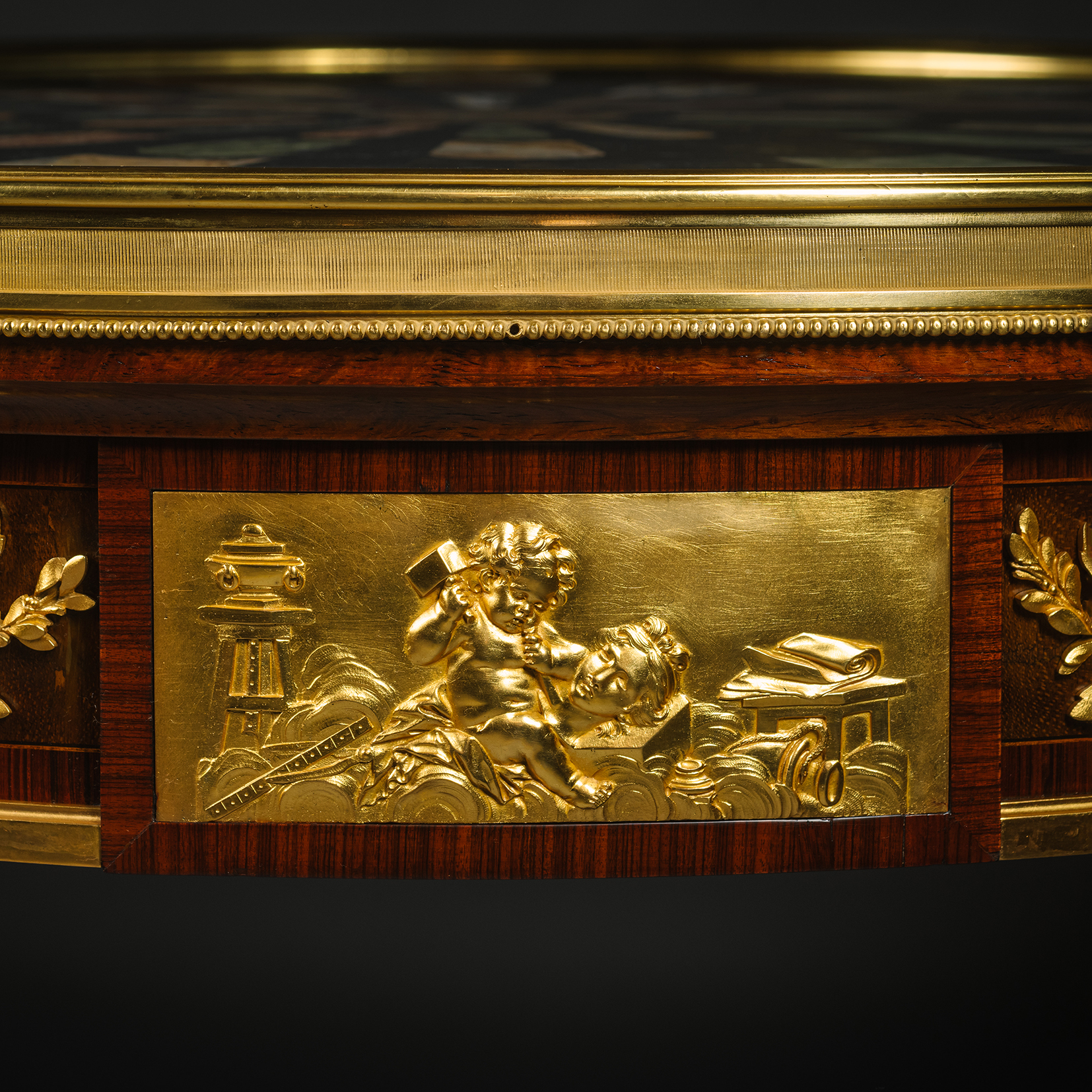
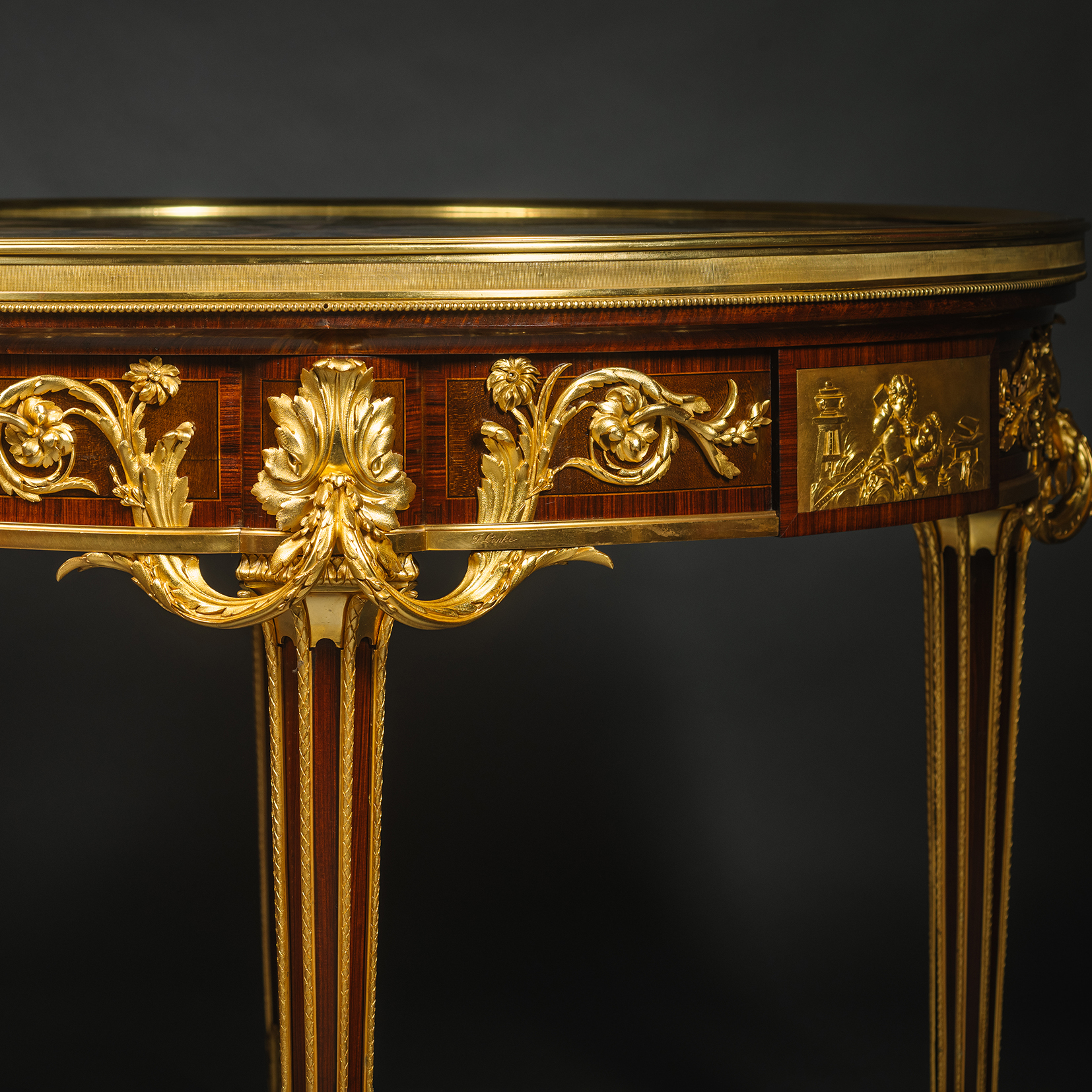
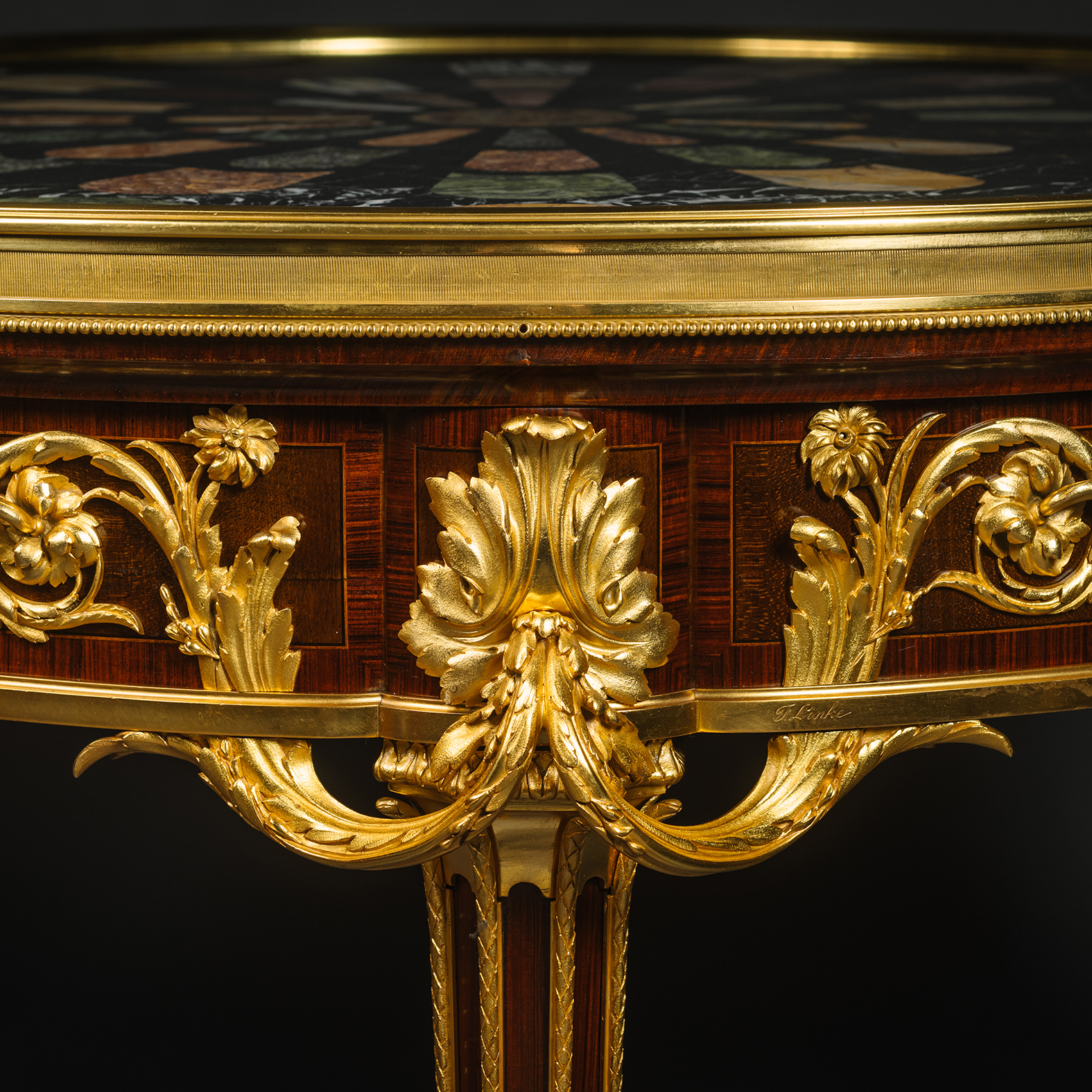
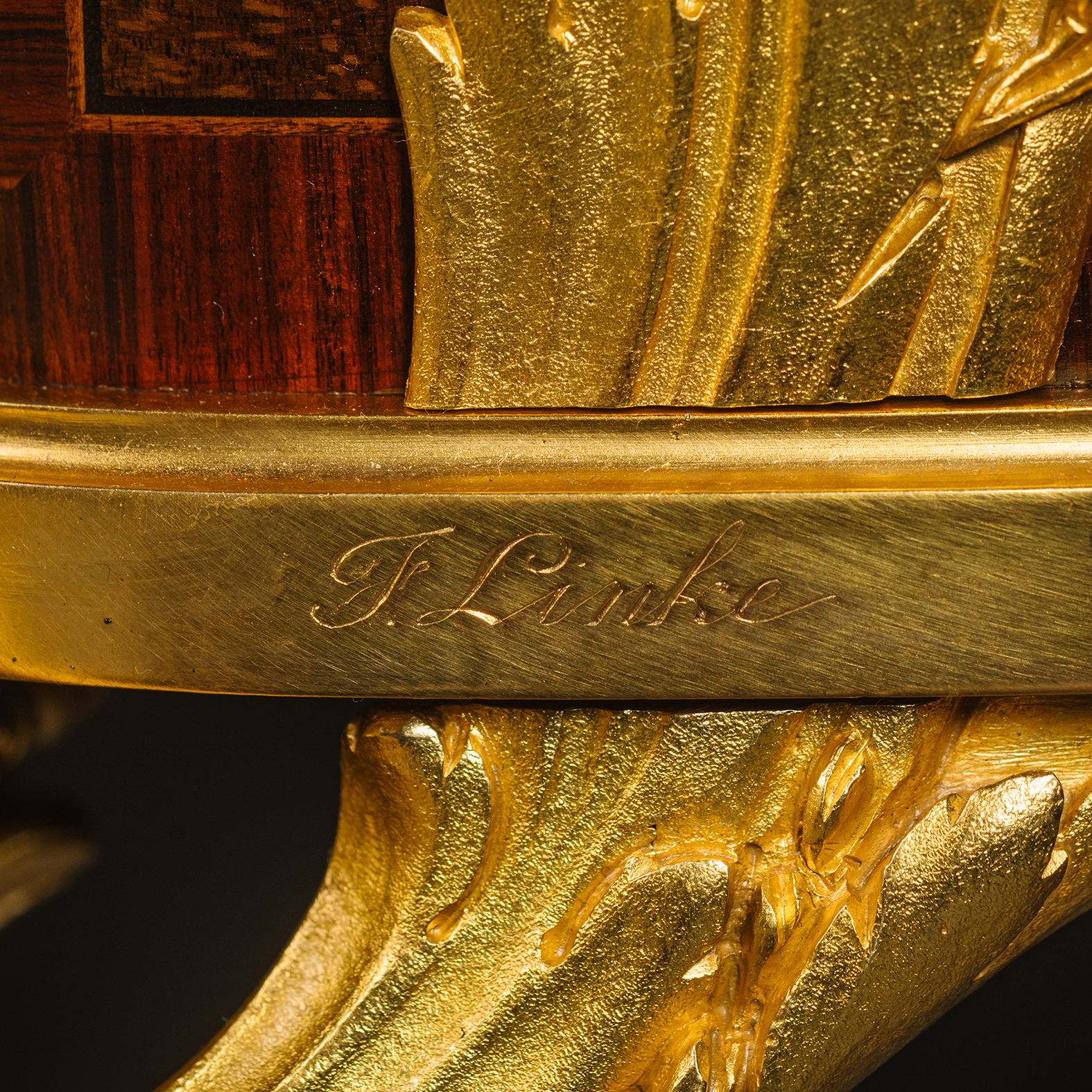

 Print
Print